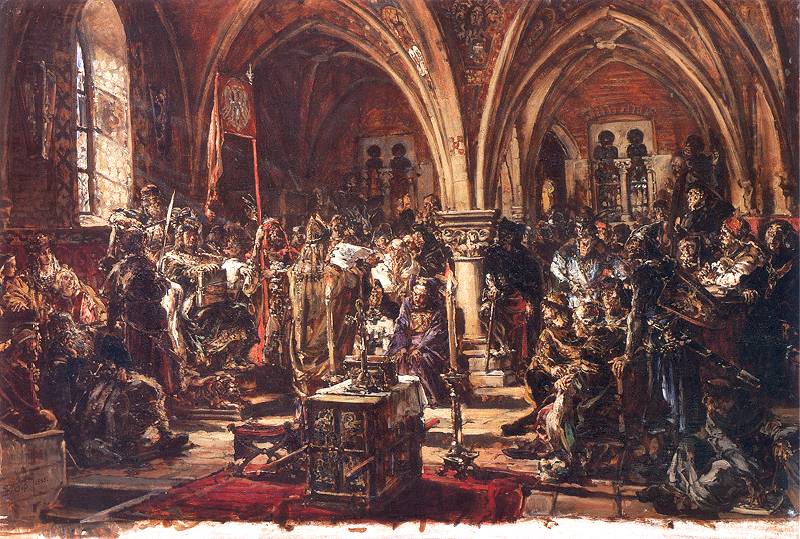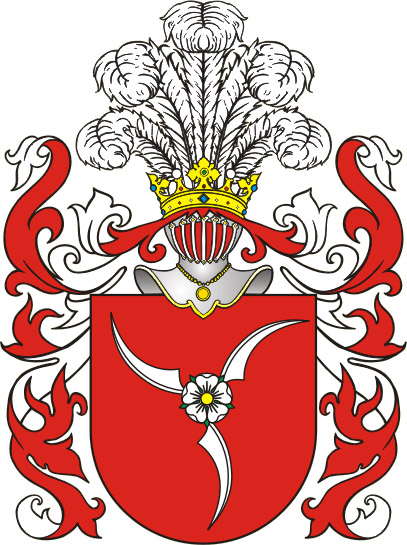|
Ruch Egzekucyjny
The Executionist movement was a 16th-century political movement in the Kingdom of Poland and, later, the Polish–Lithuanian Commonwealth. It was popular among lesser, middle and even some higher nobility, and it also enjoyed the support of the Polish king. In Polish, the movement is variously known as ''ruch egzekucyjny'', ''egzekucja praw'' ("execution nforcementof the laws"), or ''egzekucja dóbr'' ("execution of property"). The movement sought the revendication of public and state lands which were illegally held by various magnates. The followers of the movement were known as ''popularyści'' ("popularists"), or ''zamoyszczycy'' ("Zamoyskites", after the main movement supporter Jan Zamoyski). The movement opposed the abuse of the existing laws by the higher nobility (magnates), and demanded the "execution", or actual implementation, of already existing legislation. Major supporters of the movement included: * Chancellor Jan Zamoyski, * Sejm marshal Mikołaj Sienicki, * Sejm ... [...More Info...] [...Related Items...] OR: [Wikipedia] [Google] [Baidu] |
Zamoyski Statue
The House of Zamoyski (plural: Zamoyscy) is the name of an important Polish noble (szlachta) family, which used the Jelita coat of arms. It is the Polish term for "de Zamość" (Polish "z Zamościa"), the name they originally held as lords of Zamość. The family was influential in Polish politics for several centuries, and its members held various official titles, including those of Count and Countess. Family history The family traces its origins to the Łaźniński family. In the 15th century, Tomasz Łaźniński bought an estate in Stary (Old) Zamość. His sons Florian (died 1510) and Maciej assumed the name Zamoyski, and the family began to rise in prominence. Florian’s grandson Stanisław was the castellan of Chełm, and his son, Jan Zamoyski, arguably the most famous member of the family, became a chancellor, hetman, and founded the Zamoyski's Ordynat - a large estate that was a major source of the family's wealth. He was the 1st Ordynat of the Zamoyski Family Fee Tail. ... [...More Info...] [...Related Items...] OR: [Wikipedia] [Google] [Baidu] |
Hieronim Ossoliński
Hieronim Ossoliński, (born ? – died 1575 or 1576), coat of arms Topór, was a Polish statesman, kasztelan of Sandomierz and Wojnicz, a delegate to the Sejm of 1569 and one of the signatories of the Union of Lublin, which formally united Poland and Lithuania into the Polish–Lithuanian Commonwealth. Ossoliński was a Calvinist, and a leader of Protestants in the province of Małopolska during the reign of king Zygmunt August. Ossoliński was also one of the leaders of the Executionist movement, which sought to reform 16th century Polish politics. Early life In his youth, Hieronim was sent by his family to study abroad. During this time, most likely in Germany, he became familiar with Calvinism, converted, and would remain a faithful adherent and advocate for Protestantism throughout his life. He also served under Gian Giacomo Medici in Italy and participated in the taking of Siena. Executionist movement and Union of Lublin Ossoliński was one of the leaders of the Executio ... [...More Info...] [...Related Items...] OR: [Wikipedia] [Google] [Baidu] |
Nihil Novi
''Nihil novi nisi commune consensu'' ("Nothing new without the common consent") is the original Latin title of a 1505 act or constitution adopted by the Polish ''Sejm'' (parliament), meeting in the royal castle at Radom. History ''Nihil novi'' effectively established " nobles' democracy" in what came to be known as the Polish " Commonwealth r Republic">Republic.html" ;"title="r Republic">r Republicof the Nobility". It was a major component of the evolution and eventual dominant position of the Polish parliament (Sejm). "''Nihil novi''", in this politics, political sense, is interpreted in the vernacular as "Nothing about us without us" (in Polish language, Polish, "''Nic o nas bez nas''"). The Latin expression, "''nihil novi''" ("nothing new"), had previously appeared in the Vulgate Bible phrase, "''nihil novi sub sole''" ("there is nothing new under the sun"), in '' Ecclesiastes'' 1:9.''King James Version'': "The thing that hath been, it is that which shall be; and that whic ... [...More Info...] [...Related Items...] OR: [Wikipedia] [Google] [Baidu] |
Codex
The codex (plural codices ) was the historical ancestor of the modern book. Instead of being composed of sheets of paper, it used sheets of vellum, papyrus, or other materials. The term ''codex'' is often used for ancient manuscript books, with handwritten contents. A codex, much like the modern book, is bound by stacking the pages and securing one set of edges by a variety of methods over the centuries, yet in a form analogous to modern bookbinding. Modern books are divided into paperback or softback and those bound with stiff boards, called hardbacks. Elaborate historical bindings are called treasure bindings. At least in the Western world, the main alternative to the paged codex format for a long document was the continuous scroll, which was the dominant form of document in the Ancient history, ancient world. Some codices are continuously folded like a concertina, in particular the Maya codices and Aztec codices, which are actually long sheets of paper or animal skin folded ... [...More Info...] [...Related Items...] OR: [Wikipedia] [Google] [Baidu] |
Constitutions
A constitution is the aggregate of fundamental principles or established precedents that constitute the legal basis of a polity, organisation or other type of entity and commonly determine how that entity is to be governed. When these principles are written down into a single document or set of legal documents, those documents may be said to embody a ''written constitution''; if they are encompassed in a single comprehensive document, it is said to embody a ''codified constitution''. The Constitution of the United Kingdom is a notable example of an ''uncodified constitution''; it is instead written in numerous fundamental Acts of a legislature, court cases or treaties. Constitutions concern different levels of organizations, from sovereign countries to companies and unincorporated associations. A treaty which establishes an international organization is also its constitution, in that it would define how that organization is constituted. Within states, a constitution defines ... [...More Info...] [...Related Items...] OR: [Wikipedia] [Google] [Baidu] |
Sejmik
A sejmik (, diminutive of ''sejm'', occasionally translated as a ''dietine''; lt, seimelis) was one of various local parliaments in the history of Poland and history of Lithuania. The first sejmiks were regional assemblies in the Kingdom of Poland (before 1572), though they gained significantly more influence in the later era of the Polish–Lithuanian Commonwealth (18th century). Sejmiks arose around the late 14th and early 15th centuries and existed until the end of the Commonwealth in 1795, following the partitions of the Commonwealth. In a limited form, some sejmiks existed in partitioned Poland (1795–1918), and later in the Second Polish Republic (1918–1939). In modern Poland, since 1999, the term has revived with the ''voivodeship sejmiks'' (''sejmiki województwa''), referring to the elected councils of each of the 16 voivodeships. The competencies of sejmiks varied over time, and there were also geographical differences. Often, numerous different types of sejmiks co ... [...More Info...] [...Related Items...] OR: [Wikipedia] [Google] [Baidu] |
Monarch
A monarch is a head of stateWebster's II New College DictionarMonarch Houghton Mifflin. Boston. 2001. p. 707. Life tenure, for life or until abdication, and therefore the head of state of a monarchy. A monarch may exercise the highest authority and power in the Sovereign state, state, or others may wield that power on behalf of the monarch. Usually a monarch either personally inheritance, inherits the lawful right to exercise the state's sovereign rights (often referred to as ''the throne'' or ''the Crown, the crown'') or is elective monarchy, selected by an established process from a family or cohort eligible to provide the nation's monarch. Alternatively, an individual may self-proclaimed monarchy, proclaim themself monarch, which may be backed and Legitimacy (political), legitimated through acclamation, right of conquest or a combination of means. If a young child is crowned the monarch, then a regent is often appointed to govern until the monarch reaches the requisite adult a ... [...More Info...] [...Related Items...] OR: [Wikipedia] [Google] [Baidu] |
Sejm
The Sejm (English: , Polish: ), officially known as the Sejm of the Republic of Poland (Polish: ''Sejm Rzeczypospolitej Polskiej''), is the lower house of the bicameral parliament of Poland. The Sejm has been the highest governing body of the Third Polish Republic since the transition of government in 1989. Along with the upper house of parliament, the Senate, it forms the national legislature in Poland known as National Assembly ( pl, Zgromadzenie Narodowe). The Sejm is composed of 460 deputies (singular ''deputowany'' or ''poseł'' – "envoy") elected every four years by a universal ballot. The Sejm is presided over by a speaker called the "Marshal of the Sejm" (''Marszałek Sejmu''). In the Kingdom of Poland, the term "''Sejm''" referred to an entire two-chamber parliament, comprising the Chamber of Deputies ( pl, Izba Poselska), the Senate and the King. It was thus a three-estate parliament. The 1573 Henrician Articles strengthened the assembly's jurisdiction, makin ... [...More Info...] [...Related Items...] OR: [Wikipedia] [Google] [Baidu] |
Anonymous Mons Rei Publicae Polonae
Anonymous may refer to: * Anonymity, the state of an individual's identity, or personally identifiable information, being publicly unknown ** Anonymous work, a work of art or literature that has an unnamed or unknown creator or author * Anonymity (social choice), a property of a voting rule, saying that it does not discriminate apriori between voters Organizations * Anonymous (hacker group), the collective name of loosely affiliated individuals who participate in hacktivism Film and television * "Anonymous" (''Australian Playhouse''), an Australian television play * ''Anonymous'' (2011 film), a 2011 film * ''Anonymous'' (TV series), a 2006 Irish television show * "Anonymous" (''CSI''), a 2000 episode of ''CSI: Crime Scene Investigation'' * "Anonymous" (''NCIS: Los Angeles''), a 2010 episode of ''NCIS: Los Angeles'' Music * Anonymous (band), an Andorran band * ''Anonymous'' (Blackbear album) (2019) * ''Anonymous'' (Stray from the Path album) (2013) * ''Anonym ... [...More Info...] [...Related Items...] OR: [Wikipedia] [Google] [Baidu] |
Augustinus Rotundus
Augustinus Rotundus ( pl, Augustyn Rotundus, lt, Augustinas Rotundas, 1520–1582) was a Christian and Renaissance humanist, erudite, jurist, political writer, first historian and apologist of Lithuania. Rotundus was vogt of Vilnius, general secretary to the Grand Duke and King Sigismund Augustus and elder of Stakliškės. After his nobilitation to the szlachta, Rotundus adopted surname Mieleski, or Milewski. Biography Rotundus was born in Wieluń around year 1520. His surname is supposed to be "Mieleski", although some researchers suggest that it was adopted later. ''Rotundus'' is translated nickname, probably inherited from his father – Mikołaj ( en, Nickolas) "Okrągły" ( la, Rotundus), who was a rich furrier in the city of Wieluń. Rotundus studied in University of Wittenberg and Lubrański Academy in Poznań, where he was suspected of writing a nasty lampoon about Poznań catholic chapter. Undoubtedly Rotundus was a passionate catholic after graduation and supported ... [...More Info...] [...Related Items...] OR: [Wikipedia] [Google] [Baidu] |
Jan Łaski
Jan Łaski or Johannes à Lasco (1499 – 8 January 1560) was a Polish Calvinist reformer. Owing to his influential work in England (1548–1553) during the English Reformation, he is known to the English-speaking world by the Anglicised form John à Lasco (or less commonly, John Laski). Life Jan Łaski was born in 1499 as the second son of Jarosław Łaski, the voivode of Sieradz, and Zuzanna of Bąkowa Góra. Following Hermann Dalton’s claims in his nineteenth-century biography of Łaski, a number of historians have identified the Łaski family’s castle in Łask as his place of birth, although recent Polish scholarship concludes that the exact location cannot be ascertained. His uncle, also Jan Łaski, was the Archbishop of Gniezno, Primate of Poland and Grand Chancellor of the Crown, and he was instrumental in forwarding the early career of his nephew. The coat-of-arms of the Łaski family was ''Korab''. After his family's fall from political power and prestige, Łask ... [...More Info...] [...Related Items...] OR: [Wikipedia] [Google] [Baidu] |




_-_02.png)

